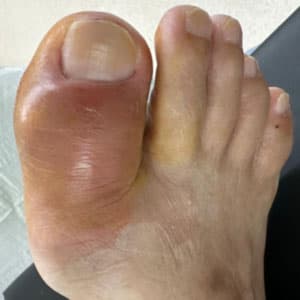Diabetic foot ulcers are a common complication of diabetes, and it is important to recognise the symptoms and signs associated with diabetic foot ulcers early so that prompt actions can be taken to prevent further complications.

Here are some symptoms and signs to look out for:
1. Redness or swelling: Diabetic foot ulcers often cause the skin around the affected area to become red or swollen. This is a sign that there may be an underlying issue that needs attention.
2. Pain or tenderness: The area around the ulcer may be painful or tender to the touch. If the pain or tenderness persists or worsens, it could be a warning sign of a diabetic foot ulcer. Pay attention to any discomfort you feel.
3. Warmth: Diabetic foot ulcers can make the skin around the ulcer feel warm to the touch. If you notice this warmth when touching your foot, it could indicate the presence of an ulcer.

4. Drainage or discharge: An open diabetic foot ulcer may produce drainage or discharge, which can be a mixture of pus, blood, or other fluids. This is a clear indication that medical attention is needed urgently.

5. Foul odor: If you notice an unpleasant smell coming from a wound or sore on your foot, it could be a sign of an infected diabetic foot ulcer. The foul odor is a result of bacterial activity and should not be ignored.

6. Blackened tissue: Diabetic foot ulcers that have become severe or infected may lead to the surrounding tissue turning black or dark. This is a serious indication that immediate medical intervention is required.
7. Numbness or tingling: In some cases, diabetic foot ulcers can cause a loss of sensation or tingling in the feet. If you experience any unusual sensations in your feet, it’s important to get it checked out.
Time is tissue! It is important to seek urgent vascular specialist advice if you experience any of the above symptoms or signs. Early diagnosis and proper treatment can help prevent further complications and improve outcomes.









